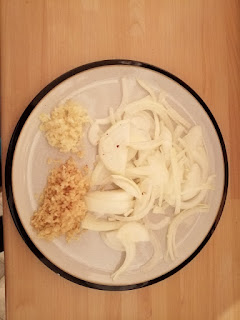Summer holiday morning TV for kids in the 70s and 80s was great. Well, some of it was. Actually, no, most of it was crap. I mean there was an inordinate amount of cheaply bought in stuff from the near continent and Eastern Europe, usually in black and white and badly dubbed. These included things like White Horses, The Flashing Blade, Belle and Sebastian. They were fucking diabolical, if I'm telling the truth. Why Don't You? was OK, I suppose, but gets a black mark against its name for bestowing Ant from off of Ant and Dec onto the viewing British public. I think the biggest problem was there weren't enough cartoons. I longed for a bit of Hanna-Barbera animation. Scooby Doo, Hong Kong Fooey or Wacky Races were always worth watching, but it was the other dross you had to wade through while you waited for these gems to come on. Bear in mind this was the time when there were a mere three channels available and TV didn't start broadcasting until about 9am after taking the night off. There was none of this 24/7 Cartoon Network/Boomerang/CITV/CBBC nonsense that you have nowadays So, knowing that British kids liked cartoons, they bought in some cartoons, but not as we knew them. They gave us Tintin.
 |
| Tintin. You really couldn't tire of punching that smug fucking face with it's smug fucking "Something About Mary" hairstyle Sourve: http://en.tintin.com/news/index/rub/0/id/4465/0/welcome-to-the-new-tintin-boutique |
Featuring Snowy White on guitar.
I was never going to have somethnig like Tintin Duffy or the Thompson Twins, was I?
So, what the fuck has Tintin got to do with this blog entry? Well, one of Tintin's companions is the sailor, Captain Haddock. He was to the maritime community what the Black and White Minstrels were to the Afro-Carribean community. To say he was a cliché is understating things. The alcoholism, the gruff demeanor, the bushy beard, the knitted sweater, it's all there. To make him any more of a cartoon sailor they would have to have removed his leg, perched a parrot on his shoulder and infected him with a strain of antibiotic-resistant syphilis found only in Jakarta. That he was the foundation for Captain Birdseye is almost certain and a sad indictment of the minds of advertisers in the UK. Even less so in this age of Operation Yewtree. The trope of a grizzled old salt merrily taking a bunch of children away on his boat lost its allure as an advertising premise faster than you can say Edward Heath.
Anyway, back to haddock. It's one of the most popular fishes consumed in the UK, along with cod. As I've mentioned previously, we're shit at eating fish in the UK, especially as we're surrounded by water, and most people will only eat fish if it's deep fried in batter. That fish is usually cod or haddock which are not the most flavourful piscine offerings in the fish mongers, though, given a choice, I do prefer haddock as it has a little more flavour than cod. There are other similar types of fish which are probably cheaper, like hake (great) or coley (grey and dire), or even fish exported from other parts of the world, like hoki. These latter examples were gaining more popularity in the UK up to a few years back due to the crash in popultion of gadidae in the North Atlantic as a result of industrial-scale trawling. More recently they had seemed to have made something of a recovery, but numbers are still on the brink. As a relatively tasteless fish, it does work with a piquant sauce, such as this. The capers really add a great tanginess and pretty much any dish can be improved through the addition of chorizo.
TIMING
Preparation 10 minutes
Sauce cooking: 30 minutes
Baking: 30 minutes
INGREDIENTS
1 tbsp olive oil
1 small onion, finely chopped
2 cloves of garlic, crushed
100g mushrooms, sliced
50g chorizo, chopped
150g tomatoes, peeled and roughly chopped
1tbsp drained pickled capers, chopped
2tbsp dry white wine
1tbsp lemon juice (about half a lemon's worth)
2 frozen fillets of haddock (about 100g each)
Clockwise from top left: tomatoes, chorizo, capers, mushrooms, garlic, onion
RECIPE
Preheat the oven to 170°C/
Heat the oil in a pan and add the onion to fry gently for about 10 minutes.
Add the garlic and fry for another couple of minute/
Add the mushrooms and fry until they look cooked, about 5 minutes.
Throw in the chorizo and fry for another 5 minutes/
Add the tomatoes, capers, white wine and lemon juice then stir.
Add plenty of black pepper, cover and turn down the heat to a gentle simmer for about 20 minutes, long wnough to brak down the tomatoes.
Prepare an oven proof dish by greasing it with a bit of oil.
Place the fish fillets on the dish then pour over the tomato and caper sauce, sufficient to cover both fillets as best as possible.
Put into the hot oven to bake for 30 minutes (or 20 minutes if you're using fresh fillets)
Serve up with oven-roasted potatoes.
Served with roasted new potatoes and roasted cauliflower
NOTES
I used frozen haddock fillets in this recipe which you use strainght from the freezer without defrosting. Paradoxically, frozen fillets are usually fresher than "fresh" fillets as they are frozen almost immediately after being caught. and not having to hang around in a supermarket fish counter for a couple of days. The instructions on the packaging suggested you can cook them in 20 minutes, but I found the fish was still raw, so made the time 30 minutes. If you used fresh fish portions, 20 minutes would be plenty of time, so adjust accordingly.
Haddock and cod are essentially interchangeable in cooking, so you just as easily use cod, You could also substitute the other fish I mentioned in the preamble, such as hake.
The preamble to this entry may sound like notalgia for a bygone day, but it's nothing of the sort. It was shite. The TV in the summer when I was growing up was there for one reason: to keep the kids occupied. This may have been so Mum could sneak in a large gin in the kitchen in peace, or could have been so kids that had been left to their own devices didn't set fire to the house while parents were out at work.
One interesting thing that I discovered when working on this was that Hong Kong Fooey was voiced by Scatman Crothers who also appeared in The Shining.
Captain Birdseye has been in the news lately as Birdseye have decided to revamp the image of the character and he is now a 24 year old woman. This has caused a major meltdown amongst the sort of person who accuse other people of being snowflakes.






















